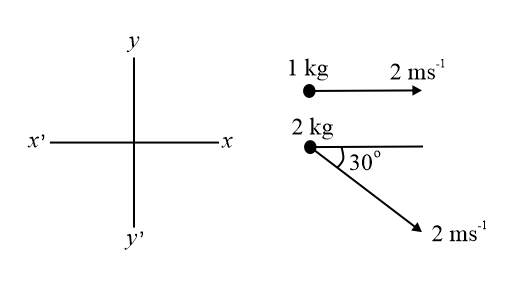K K Sharma Solutions for Chapter: Centre of Mass, Momentum Conservation and Collision, Exercise 1: TOPICWISE QUESTIONS
K K Sharma Physics Solutions for Exercise - K K Sharma Solutions for Chapter: Centre of Mass, Momentum Conservation and Collision, Exercise 1: TOPICWISE QUESTIONS
Attempt the practice questions on Chapter 1: Centre of Mass, Momentum Conservation and Collision, Exercise 1: TOPICWISE QUESTIONS with hints and solutions to strengthen your understanding. Practice Book for MHT-CET Physics (Mechanics II) solutions are prepared by Experienced Embibe Experts.
Questions from K K Sharma Solutions for Chapter: Centre of Mass, Momentum Conservation and Collision, Exercise 1: TOPICWISE QUESTIONS with Hints & Solutions
Two objects of masses and possess velocities and , respectively. The velocity of their centres of masses in is
The velocity of centre of mass of the system as shown in the figure is

Three particles of masses , and are subjected to forces , and , respectively. The magnitude of the acceleration of the COM of the system is
Two bodies of mass and are moving with velocity and , respectively. The velocity of their centre of mass is
A block of mass is moving with a speed of on a smooth surface. It strikes another mass of and then, they move together as a single body. The energy loss during the collision is
Three balls and are placed on a smooth horizontal surface. Ball collides with ball with an initial velocity , as shown in the figure. Total number of collisions between the balls will be (all collisions are elastic)

A particle moving horizontally collides with a fixed plane inclined at to the horizontal. If it bounces vertically, the coefficient of restitution is
A point mass of collides elastically with a stationary point mass of . After their collision, the mass reverses its direction and moves with a speed of . Which of the following statements is correct for a system of these two masses?
